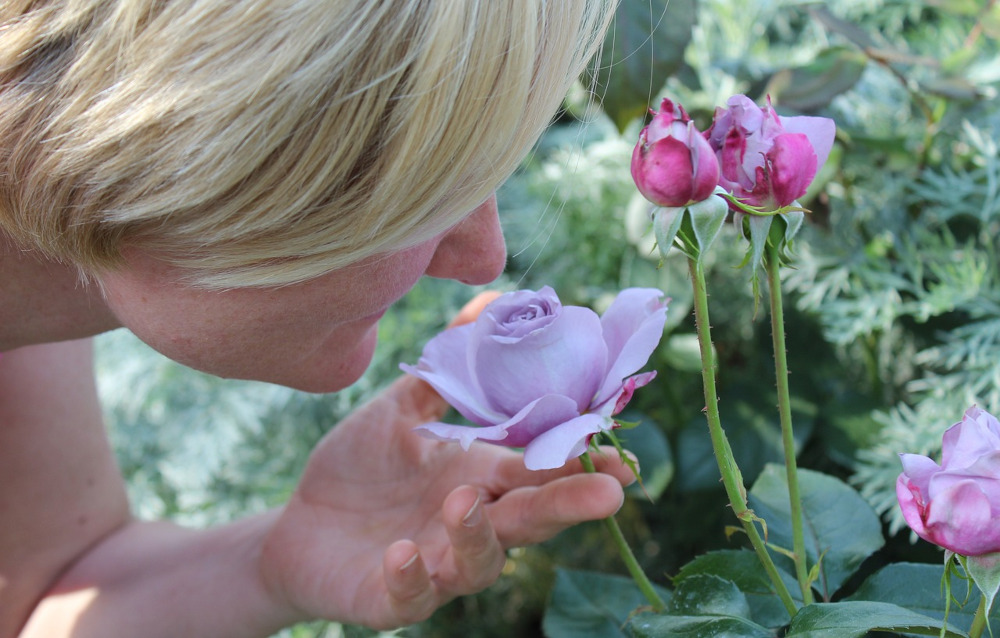The Science Behind Aromatherapy: Why Your Nose Knows Best

How Our Olfactory System Works
When you inhale an essential oil, aromatic molecules bind to olfactory receptors in your nose. These receptors send signals directly to the olfactory bulb, a structure located just above the nasal cavity, which is unique because it's directly connected to the brain's limbic system. The limbic system is involved in regulating emotions, memories, and certain survival functions like heart rate and breathing.
What’s fascinating is how this system bypasses the thalamus—the brain’s "switchboard" for most sensory information. This direct route explains why smells can instantly trigger vivid memories or emotional responses. It’s also why scents like lavender, which has been shown to have calming effects, are effective at reducing anxiety and promoting relaxation.
The Limbic System and Aromatherapy’s Effectiveness
The connection between smell and the limbic system is what makes aromatherapy effective for certain treatments, particularly those tied to mood regulation and stress. Essential oils like lavender, rose, and bergamot can reduce anxiety, alleviate depression, and improve sleep quality because they directly engage the limbic system. Research supports these effects; for instance, a 2017 study showed that inhaling lavender oil can significantly lower cortisol levels, the hormone linked to stress.
Additionally, aromatherapy has been used for pain management, particularly for chronic pain conditions like fibromyalgia. By stimulating certain brain pathways, certain essential oils can have analgesic effects. For example, peppermint oil contains menthol, which has both cooling and numbing properties that may help reduce pain.
Why Aromatherapy Doesn't Work for Everything
While aromatherapy is effective for some emotional and psychological concerns, it’s not a cure-all. The limitations stem from the fact that it primarily affects the brain's limbic system and autonomic responses. Conditions that involve more complex physiological processes or structural damage to organs and tissues are less likely to be improved through aromatherapy.
For instance, while inhaling eucalyptus oil might help clear nasal passages and improve breathing during a cold, it won’t cure the underlying viral infection. Similarly, while aromatherapy may help reduce perception of pain, it’s not going to heal a broken bone or treat a bacterial infection. Essentially, the effectiveness of aromatherapy is limited to symptom management rather than addressing the root cause of many diseases.
Neuroanatomical Limits: The Brain’s Physical and Chemical Boundaries
Another limitation of aromatherapy is that its effects are constrained by neurochemical boundaries. While certain essential oils can increase the production of neurotransmitters like serotonin and dopamine, the impact is subtle compared to pharmacological treatments. For conditions like clinical depression or schizophrenia, where there’s a significant imbalance of brain chemicals, aromatherapy alone is insufficient. The olfactory system can influence the brain, but its power is limited when it comes to major structural or neurochemical imbalances.
In short, while aromatherapy can engage your body’s natural ability to relax, manage stress, and relieve pain, it’s not powerful enough to tackle complex medical issues on its own.
Conclusion
Aromatherapy works best in areas where it can engage the limbic system and autonomic processes—relaxation, mood regulation, pain perception—but it has limits when it comes to treating deeper physiological issues. So while your nose may be a powerful gateway to better mental health, it’s not a substitute for more traditional medical treatments for serious health conditions.
Love what you’re reading? Don’t miss out on future articles! Subscribe for updates on our latest posts and our bi-monthly newsletter.
Sign up now—no spam, just good vibes and holistic health insights delivered straight to your inbox!
Herz, R.S. (2009). Aromatherapy Facts and Fictions: A Scientific Analysis of Olfactory Effects on Mood, Physiology, and Behavior. International Journal of Neuroscience.
Saeki, Y. (2000). The effect of aromatherapy massage on the autonomic nervous system and back pain in nurses. The Journal of Alternative and Complementary Medicine.
Ali, B., Al-Wabel, N.A., et al. (2015). Essential oils used in aromatherapy: A systemic review. Asian Pacific Journal of Tropical Biomedicine.
Edris, A.E. (2007). Pharmaceutical and therapeutic potentials of essential oils and their individual volatile constituents: A review. Phytotherapy Research.
Lorig, T.S. (1999). On the similarity of odor and trigeminal chemosensory event-related potentials. Chemical Senses.
Moss, M., Cook, J., et al. (2003). Aromas of rosemary and lavender essential oils differentially affect cognition and mood in healthy adults. International Journal of Neuroscience.
